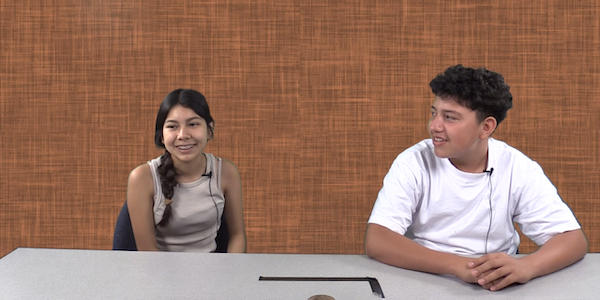Students develop an understanding of binomial multiplication that goes beyond learning procedures for multiplying binomials. They explore a variety of area contexts, generalize relationships, and represent those relationships using algebraic expressions and equations. Students relate each algebraic symbol and term to their drawings of area.
Lesson 1: Understanding Area
Emily and Mauricio recall the formula to find the area of a rectangle: Area equals length times width (A = L • W). Then they go beyond the formula to understand the meaning of area measurement units (such as a square inch or a square centimeter), the relationship between linear and area measurement units, what the 24 in 24 in2 represents, and the meaning of multiplication in the area formula.
Lesson 2: Effect of Increasing Length and Width on Area
Emily and Mauricio compare the areas of two home offices. One office was formed by increasing both the length and width of the other office. The students create a visual representation of the area of the new office that breaks the room into four parts. They write arithmetic equations that express different ways to find the area of the new office.
Lesson 3: Algebraic Expressions for Increasing One Dimension
Mauricio and Emily explore situations in which a new garden is formed by increasing the length of an original garden. First, the students find the area of the new garden when the particular increase in length is given. For example, the length of a garden is increased by 3 ft, 2.5 ft, 3.5 ft, and 5 ft. For each given increase, the students employ different methods to find the area of the new garden. Then they generalize their methods for an unknown increase in length and express their generalizations using algebraic expressions.
Lesson 4: Algebraic Expressions for Decreasing One Dimension
Emily and Mauricio explore situations in which a new garden is formed by decreasing the length of an original garden. First, the students find the area of the new garden when the particular increase in length is given. For example, the length of a garden is decreased by 4 ft and then by 7 ft. For each given decrease, the students employ different methods to find the area of the new garden. Then they generalize their methods for an unknown decrease in length and express their generalizations using algebra.
Lesson 5: Algebraic Expressions for Increasing Both Dimensions
The students explore situations in which a new garden is formed by increasing both the length and width of an original garden. First, the students find the area of the new garden when the particular increase is given. Specifically, the length and width of the original garden are increased by 2 m, 4 m, and 7 m. For each given increase, the students employ different methods to find the area of the new garden. Then they generalize their methods for an unknown increase and express their generalizations using algebraic expressions.
Lesson 6: Multiplying Binomials
In Lesson 5, the students started with a rectangle of given dimensions (e.g., 7 m by 3 m) and increased the length and width by the same unknown amount. In this lesson, the students start by thinking about a square of unknown side length. Then they increase its length by 4 inches and its width by 3 inches. They make sense of binomial multiplication, such as (y + 4) • (y + 3) = y2 + (4 • 7) + (3 • y) + 12, as an expression of two different ways to find the area of the rectangle that is created. Mauricio and Emily also reflect on the repeated use of the distributive property in binomial multiplication.

